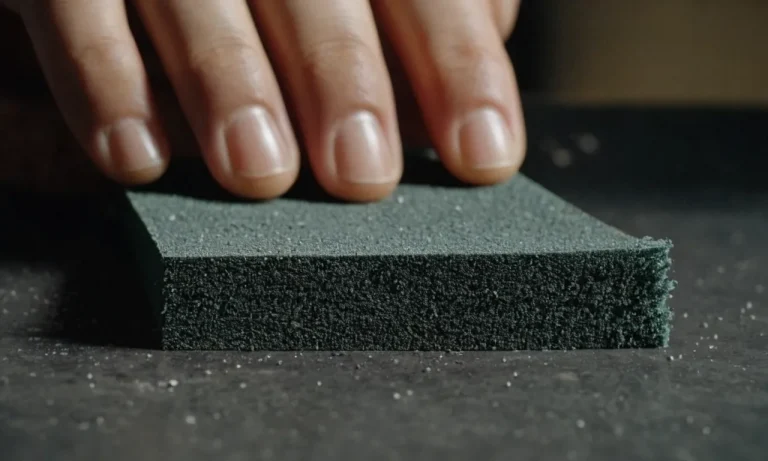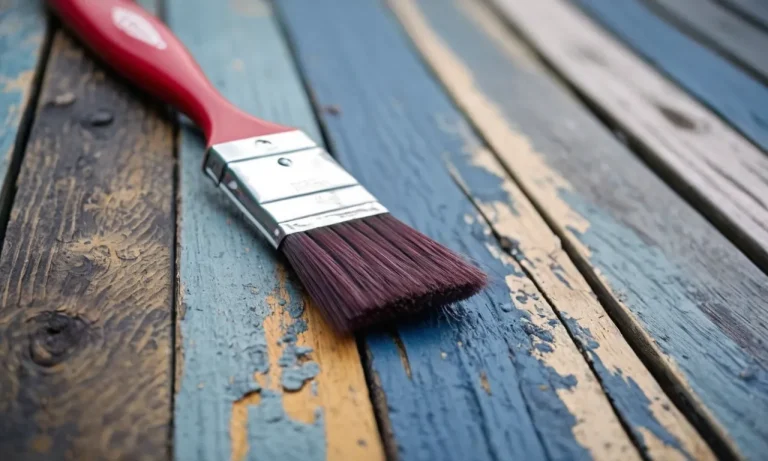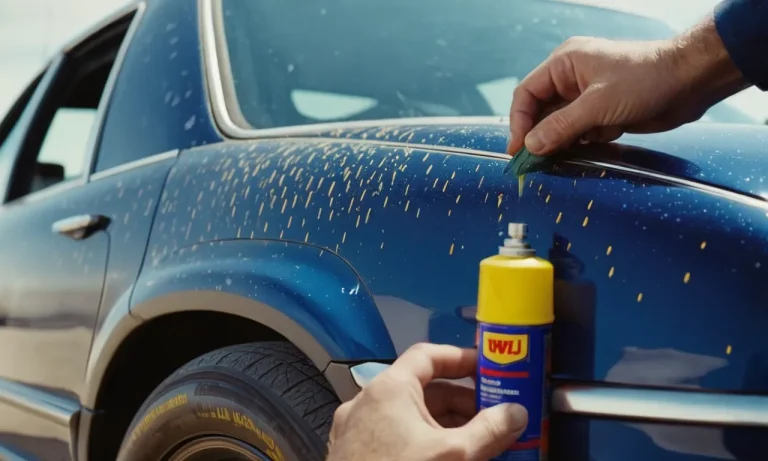How To Dry Oil Paint Faster: A Complete Guide
If you’re an oil painter, you know the frustration of waiting for layers to dry. When inspiration strikes, you want to keep working uninterrupted. So how can you speed up the oil paint drying process?
If you’re short on time, here are some quick tips: use painting mediums, thin paint layers, blot excess oil, and create airflow over the surface. Keep reading to learn why oil paint takes so long to dry, and get a comprehensive guide to methods for drying paintings faster.
Understanding Why Oil Paints Dry Slowly
Oil paints are known for their versatility and ability to create rich, vibrant colors. However, one downside to using oil paints is their slow drying time. Understanding why oil paints dry slowly can help artists find ways to speed up the drying process and complete their artwork more efficiently.
The Chemistry Behind Drying Oils
The main reason why oil paints dry slowly is due to the chemical composition of the oils used as binders in the paint. Traditional oil paints are made with linseed oil, which contains fatty acids that undergo a process called oxidation.
This oxidation process is what causes the paint to dry and harden over time. However, this process can take days, weeks, or even months to fully complete.
It’s important to note that different types of oils can have varying drying times. For example, walnut oil dries faster than linseed oil, while poppy seed oil dries slower. Artists can choose oils based on their desired drying time and the effects they want to achieve in their artwork.
Thickness and Fat Over Lean
The thickness of the paint layer also affects the drying time. Thicker layers of paint will dry slower compared to thin layers. This is because the outer layer of the paint will dry first, while the inner layers take longer to dry.
Artists can control the drying time by adjusting the thickness of their paint layers.
Another important principle for oil painters to understand is the concept of “fat over lean.” This means that each subsequent layer of paint should have more oil content than the layer below it. This allows for proper drying and prevents cracking.
If a lean layer (with less oil) is applied over a fat layer (with more oil), the top layer can dry faster and shrink, causing cracks to form.
Environmental Factors That Slow Drying
Aside from the chemical properties of the oil paints, certain environmental factors can also contribute to slow drying times. Humidity, temperature, and air circulation all play a role in how quickly oil paints dry.
High humidity and low temperatures can prolong the drying process, while good air circulation can help promote faster drying.
It’s important for artists to consider these factors when choosing a suitable drying space for their artworks. A well-ventilated area with controlled humidity and temperature can help speed up the drying time.
Speeding Up Drying with Painting Mediums
One of the key factors in speeding up the drying process of oil paint is the use of painting mediums. These mediums are specifically formulated to alter the drying time and consistency of oil paint, allowing artists to have more control over their work.
By incorporating the right painting medium into your painting process, you can significantly reduce the drying time of your oil paintings.
All About Painting Mediums and How They Work
Painting mediums are substances that are added to oil paint to modify its characteristics. They can alter the drying time, texture, and glossiness of the paint, making it easier to work with and speeding up the drying process.
There are various types of painting mediums available, each with its own unique properties and effects on the paint.
One common type of painting medium is the drying medium, which contains solvents that evaporate quickly and help to accelerate the drying time of oil paint. These mediums are particularly useful when you need your paint to dry faster, allowing you to continue working on your artwork without waiting for extended periods of time.
Another type of painting medium is the glazing medium, which is used to create transparent layers of paint. This medium can also help in speeding up the drying time of your oil paint, as it contains drying agents that facilitate the drying process.
Recommended Mediums for Faster Drying
When it comes to choosing the right painting medium for faster drying, there are several options to consider. One popular choice is the alkyd medium, which is a synthetic medium that dries faster than traditional oil mediums.
It can be mixed with oil paint to speed up the drying time while maintaining the characteristics of oil paint.
Galkyd is another recommended medium for faster drying. It is a resin-based medium that thins the paint and improves its flow, allowing it to dry quicker. Galkyd also enhances the clarity and depth of colors, making it a versatile choice for artists.
Additionally, there are many other commercially available mediums specifically designed for faster drying. These mediums often contain ingredients that promote quick evaporation, such as mineral spirits or turpentine.
It’s important to carefully read the instructions and labels of these mediums to ensure proper usage.
How to Use Mediums With Paints
Using painting mediums with oil paints is a straightforward process. Firstly, you need to mix the painting medium with your oil paint on your palette. The ratio of medium to paint may vary depending on the desired drying time and consistency.
It’s recommended to start with a small amount of medium and gradually increase it if necessary. This allows you to have better control over the drying time and the overall characteristics of your paint. Remember that using too much medium may affect the integrity of your paint layers.
After mixing the medium with the paint, you can apply it to your canvas using your preferred painting techniques. Keep in mind that the drying time may still vary depending on factors such as the thickness of the paint layers and the environmental conditions.
For more detailed information on specific painting mediums and their usage, you can refer to reputable art websites such as Art is Creation or Winsor & Newton. These websites provide valuable resources and recommendations for artists seeking to speed up the drying time of their oil paintings.
Applying Paint in Thin Layers
When it comes to drying oil paint faster, one effective technique is to apply the paint in thin layers. This not only speeds up the drying process but also allows for better control and flexibility in your artwork.
Let’s explore why thin layers dry faster and some brush techniques you can use to achieve this.
Why Thin Layers Dry Faster
One of the main reasons why thin layers of oil paint dry faster is because they have a smaller volume of paint to dry. Thicker layers can take a significant amount of time to dry completely, as the paint needs to dry from both the outer surface and the deeper layers.
By applying thin layers, you reduce the overall drying time and minimize the risk of cracking or uneven drying.
Additionally, thin layers promote better air circulation around the paint, allowing it to dry more evenly. This is especially important when working with oil paints, as they have a longer drying time compared to other mediums.
By applying thin layers, you create a larger surface area for the paint to dry, ensuring a more efficient drying process.
Brush Techniques for Thin Layers
Now that you understand the benefits of applying thin layers, let’s dive into some brush techniques that can help you achieve this:
- Use a dry brush: Before applying the paint, make sure your brush is relatively dry. This will help you apply a thinner layer of paint and avoid excessive buildup.
- Apply with light pressure: When applying the paint, use light pressure on the brush. This will help you distribute the paint evenly and prevent thick, heavy layers.
- Thin out the paint: If you find that your paint is too thick, you can mix in a small amount of solvent or medium to thin it out. This will make it easier to apply thin layers.
- Work in layers: Instead of trying to achieve full coverage in one go, consider working in multiple layers. Allow each layer to dry completely before adding another, ensuring a smoother and faster drying process.
By incorporating these brush techniques into your oil painting process, you can effectively apply paint in thin layers and speed up the drying time.
For more information and tips on oil painting techniques, you can visit https://www.artistsnetwork.com. They offer a comprehensive guide to oil painting that can further enhance your skills and knowledge in this art form.
Blotting and Removing Excess Oil
When it comes to drying oil paint faster, one effective method is to blot and remove excess oil from the surface. This can help speed up the drying process and reduce the overall drying time. There are a couple of techniques you can try to achieve this.
Using Paper Towels to Absorb Oil
One simple way to remove excess oil from your oil painting is by using paper towels. Gently press a clean paper towel onto the painted surface, allowing it to absorb the excess oil. Be careful not to rub or smear the paint, as this can damage the artwork.
Repeat this process as needed until you’ve removed as much oil as possible.
It’s important to note that this method works best for small areas with excess oil. If your entire painting has a significant amount of excess oil, it may be more effective to use a different technique or seek professional advice.
Oil-Absorbing Pigments to Add to Paint
Another option to consider is adding oil-absorbing pigments to your paint. These pigments are specifically designed to absorb excess oil and can help accelerate the drying process. They can be mixed into your paint or applied as a layer on top of the wet paint.
There are various oil-absorbing pigments available in the market, such as calcium carbonate or magnesium silicate. These pigments act as absorbents, soaking up the excess oil and allowing the paint to dry faster.
It’s important to follow the manufacturer’s instructions when using these pigments to ensure proper use and achieve the desired results.
Keep in mind that while these techniques can help speed up the drying process, it’s still important to allow sufficient time for the paint to dry completely. Rushing the drying process too much may affect the quality and longevity of your artwork.
For further information and tips on drying oil paint faster, you can visit artistsnetwork.com, where you can find helpful resources and insights from experienced artists and experts in the field.
Creating Airflow Over the Painting
When it comes to drying oil paint faster, creating airflow over the painting can be highly effective. By increasing air circulation, you can accelerate the drying process and reduce the waiting time for your artwork to be ready. There are a few methods you can use to achieve this.
Positioning Near a Fan
One way to create airflow over your oil painting is by positioning it near a fan. Set up a fan facing the painting, making sure it is blowing air gently over the surface. This will help to evaporate the solvents in the paint, allowing it to dry faster.
Remember to adjust the fan’s speed and distance to avoid any potential damage to the artwork.
Letting Works Dry in Sunlight
Another method to speed up the drying process is by letting your oil paintings dry in sunlight. Natural sunlight can provide a gentle and consistent heat source, aiding in the evaporation of the solvents in the paint.
However, it’s important to note that prolonged exposure to direct sunlight can cause the colors to fade over time. Therefore, it’s recommended to avoid placing your paintings in direct sunlight for extended periods.
Instead, find a location with indirect sunlight where your artwork can dry safely and efficiently.
Remember, it’s always essential to handle your artwork with care and ensure it is positioned in a safe and stable manner during the drying process. By creating airflow over your oil paintings, whether through the use of a fan or by utilizing sunlight, you can significantly reduce the drying time and enjoy your finished pieces sooner.
Conclusion
There are many techniques oil painters can use to decrease drying time for their works. The most effective approach is to combine methods, like using fast-drying mediums and painting in thin layers. Experiment to find what works best for your painting style and desired results.
With the right strategies, you can work more efficiently and cut down on wait times between layers.







